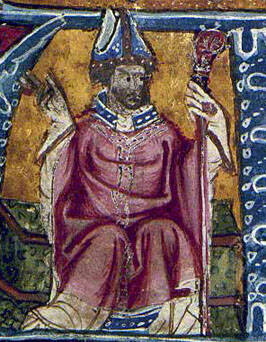The first academic article I ever published was in 2007 about two medieval British theologians, Robert Grosseteste and John Duns Scotus, titled: “Light and Love: Robert Grosseteste and John Duns Scotus on the How and Why of Creation” (although the first popular article I ever published happened to be in America a few months earlier!). Scotus is certainly the better known of the two, but Grosseteste was an “intellectual giant,” to borrow the accolade used in a recent Economist blog post.
Grosseteste (d. 1253) was indeed a unique figure: a “scientist” (if we can anachronistically use that term), a theologian, a philosopher, a pastoral minister, a former chancellor of the nascent Oxford University, the first instructor of the Franciscan friars in England, and eventually the Bishop of Lincoln. In old age, he taught himself Greek (something few of his peers could do) so that he could read, and write a commentary, on Aristotle’s work. He was a polymath and a capacious thinker and one whose work is hard to pin-down or easily categorize.
Among the most interesting topics Grosseteste worked on was the question of the reason for the Incarnation. Unlike the majority perspective most associated with the work of someone like Anselm of Canterbury, which posited that “Adam’s Fall” or human sinfulness was the reason for the Incarnation, Grosseteste – like a handful of others before him – insightfully argued that the Incarnation would have been fitting and therefore would have happened even if there was no Fall.
However, the work that caught the attention of the Economist this week was not Christological. Rather, it was Grosseteste’s treatise De Luce (“On Light”) written around 1225, which is a cosmological text positing the development of creation from a singular point of light, the same treatise that first drew me to this thirteenth-century scholar. It appears that the “Ordered Universe Project” team in the UK believes that Grosseteste was “the first to try to develop unified physical laws to explain the origin and form of the geocentric medieval universe of heavens and Earth.”
The Economist explains:
In the 13th century, atoms were thought to be infinitesimal points, so for matter to have volume, something else was needed. For Grosseteste, that something was light. His geocentric cosmos began with an explosion of a type of light he called lux, which expanded into a vast, ever-thinning sphere of matter and light. But matter could only thin so far, thought Grosseteste, after which it crystallised into a “perfected” layer—the spherical boundary of his medieval universe. Another type of light, lumen, then radiated back, sweeping up, compressing and purifying any “imperfect” matter in its wake. This created the second heavenly sphere (the “fixed” stars), then each of five planets, the sun and moon. By now the lumen was so weak it could no longer purify matter, which left the imperfect Earth, its four elements and atmosphere. For all of this, Grosseteste defined universal physical laws.
This contemporary engagement with Grosseteste’s work is exciting for a theologian who, for the better part of a decade, has been fascinated with the medieval British thinker’s prescience and perennial relevance (despite his relative anonymity today). What’s more, the Economist highlights how this engagement with Grosseteste illustrates how the increasing popularity of STEM programs and curricula in the United States and elsewhere is highly problematic. Modern scientists would not know anything about Grosseteste, nor be able to understand his thought, without the collaboration of philosophers, theologians, linguistic experts, others from the humanities.
Theology had and still has a lot to say today and perhaps, as this Economist piece notes, something to teach science.
[To read the whole Economist piece, go to: “Unearthing a 13th-Century Metaverse.”]
Daniel P. Horan, OFMis a Franciscan friar of Holy Name Province, a columnist at America magazine, and the author of several books including the new The Last Words of Jesus: A Meditation on Love and Suffering (2013).









I forgot to mention, for those interested, there is a new critical edition and translation of Grosseteste's De Luce. The edition is by Cecilia Panti and the English translation is by Neil Lewis, both can be found in Robert Grosseteste and His Intellectual Milieu: New Editions and Studies, eds John Flood, James Ginther, and Joseph Goering (Toronto: PIMS, 2013), 193-247.